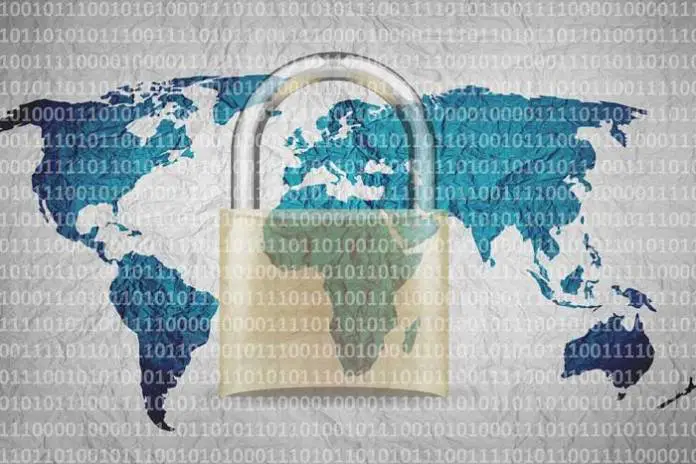
Do your employees work on task management software? Is data or storage all digitized? In today’s corporate landscape, companies heavily rely on high-tech tools. In addition to streamlining workflows, tech-savvy tools foster productivity and efficiency levels. However, emerging technologies are also exposing companies to the risk of cyberattacks. Hackers can break into digital systems and steal sensitive data, costing millions to business owners.
In the past couple of years, there has been much buzz around cyberattacks. Cybercriminals are extracting confidential details with more significant motives. They seek ransomware from companies while threatening to leak information. Alongside regulatory penalties, data breaches and identity thefts can put the entire company’s reputation at stake.
Therefore, every entrepreneur should invest in data security solutions to mitigate the threat of cyberattacks. You can enforce strong passwords, spread awareness about phishing attacks, and install firewalls to restrict unauthorized access to the systems. Competent cybersecurity mechanisms can foolproof a company’s information technology (IT) system, reducing the likelihood of data breaches. If you are also thinking of investing in innovative security solutions, have a look below.
Here we are highlighting the five most up-to-date data security solutions for the business.
1. Hardware Authentication
Do your cloud servers have a passcode? Nowadays, decoding passwords is no big deal for hackers. Hence, a pin and passcode won’t be enough to secure sensitive information. You have to embed authenticators in the hardware to verify the user’s identity. The cybersecurity experts know how to integrate pro-chips and strengthen the system’s security. However, if you don’t have the budget to hire cybersecurity personnel, consider learning the ropes yourself.
If you already have a bachelor’s degree, complete a master’s in information security online to secure sensitive business data. You will understand how computer hardware and software programs work, letting you integrate two-factor authentication on the company’s system. You can also even install biometric scanners or facial ID recognitions to close doors for hackers.
2. Data Loss Prevention
When we talk about data loss prevention, you will hear people talking about encryption and tokenization. These two data solutions protect information down to the fields and subfields, offering many benefits to organizations. Firstly, the hackers cannot monetize data in case of a data breach because it won’t be shareable outside the network. Secondly, employees can share sensitive information among themselves since it has several layers of protection.
Moreover, the managers can analyze tons of data without having to worry about security. The encrypted servers secure information from end-to-end networks, reducing risk and exposure if you don’t have the budget to encrypt entire cloud servers. Use this data solution for credit card details, personally identifiable information, and health records.
3. Blockchain Integration
The decentralized ledger blockchain is becoming every entrepreneur’s utmost priority. In addition to reducing transaction costs, it protects companies against data theft and fraud. All the computers in the blockchain ledger have a copy of the company’s data. Hence, data breaches are not possible unless multiple computers attack simultaneously.
Furthermore, blockchain rules out the threat of identity left. It provides proof of the identity system through which companies can verify whether a person is credible or not. Likewise, every member has to verify the data’s authenticity to ensure it doesn’t have any malicious software. In short, blockchain technologies can manage data vulnerability and secure data through encrypted servers.
4. User-Behavior Analytics
At times, an organization’s entire system is under attack. However, they don’t know until someone finds corrupted files in the system. And by that time, the damage becomes irreversible. Well, things can be pretty different with savvy data solutions. Entrepreneurs can leverage user behavior analytics to keep an eye on malicious behavior. It triggers a red flag to system defenders whenever there is uneven activity on the network.
The technology leverages big data that can address blind spots in enterprise security. For instance, an abnormal increase in data transmission can indicate a possible cybersecurity threat. By identifying cybersecurity threats beforehand, you can limit damage and recover data quickly. You can raise emergency firewalls to stop data transmission. Similarly, log out all users from the system to eliminate all unauthorized access.
5. Zero-Trust Models
The cybersecurity model relies on assuming that the system is at a constant threat of attacks. By believing the network is untrustworthy, one will naturally make efforts to enhance internal and external securities. Using this zero-trust model, the business owners can identify critical data, map data flow, and segment it logically. Similarly, they can enforce control through automation and monitoring to keep a vigilant eye on potential hacking activity.
The zero-trust model approach fosters consistent improvements in the company’s security system. The cybersecurity experts start to think from a hacker’s perspective to unfold vulnerabilities in the network and fix them instantly. Also, make sure to integrate the zero-trust model’s technology. It includes multi-factor authentication, encryption, file systems permission, and orchestration.
Final Thoughts
Businesses worldwide are heavily investing in data security solutions since it has become the need of the hour. The pattern of attacks is changing since cybercriminals are using different tactics to steal data. Besides the social engineering scams, they use dark web and black hat practices to break into systems. Therefore, every company should leverage security solutions to protect their business in cyberspace.











